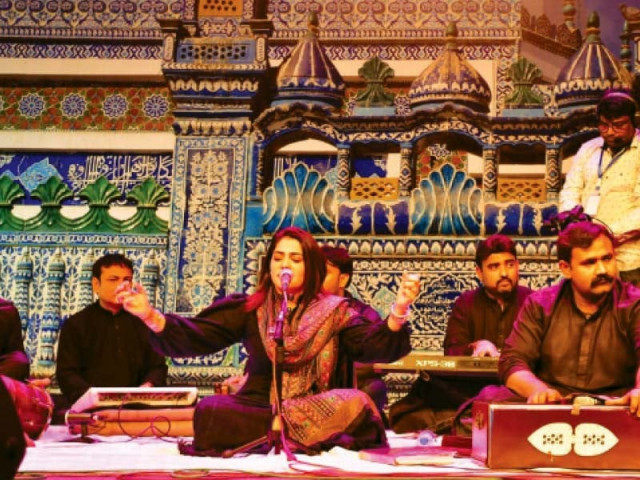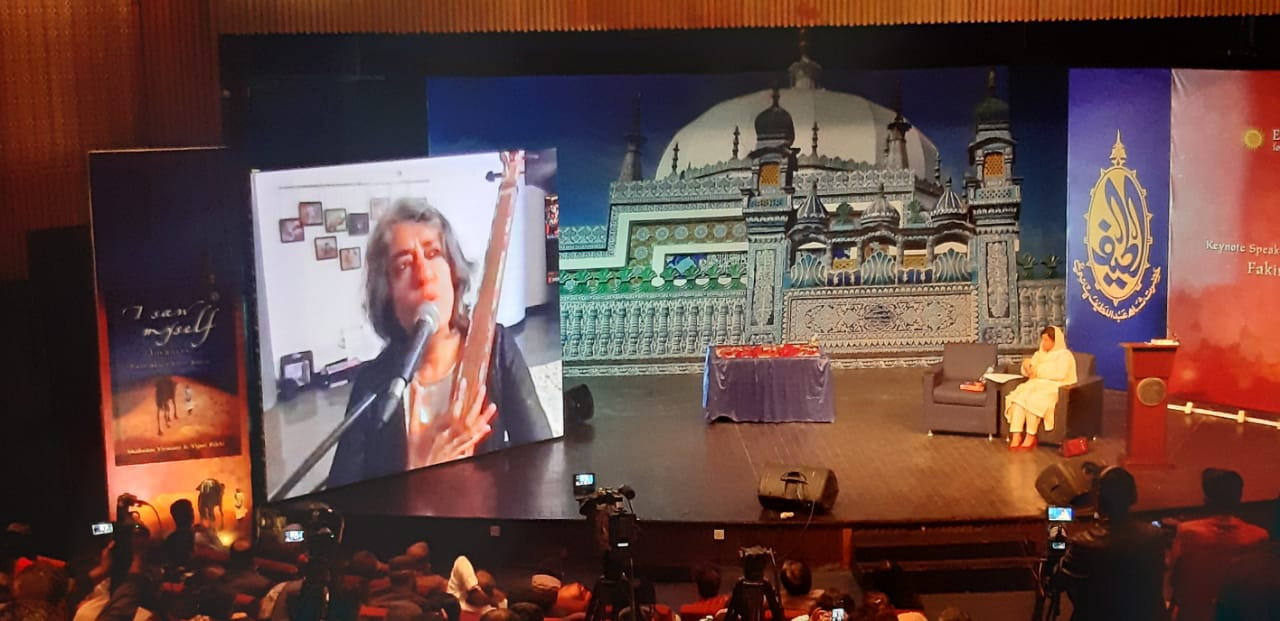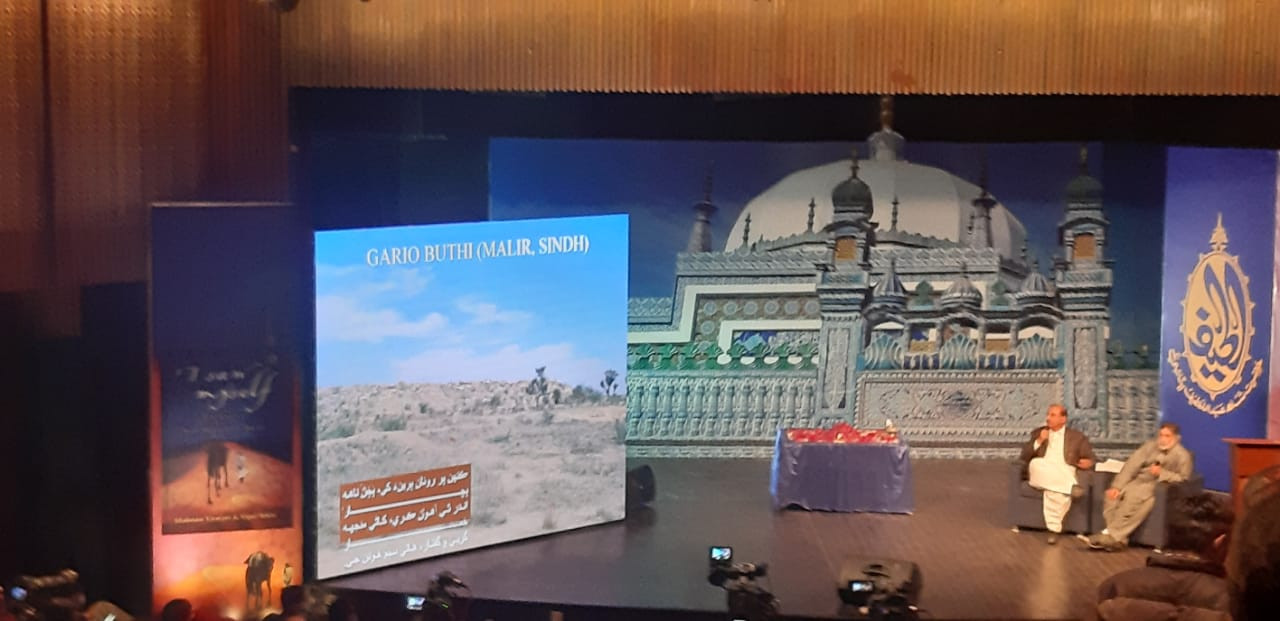Love for Latif transcends borders
Book explores the contemporary presence of epic love legends, such as Sohni-Mehar and Sassui-Punhu

A book titled ‘I Saw Myself: journeys with Shah Abdul Latif Bhitai’ written by Indian authors Shabnam Virmani and Vipul Rikhi was launched at Arts Council Pakistan, Karachi.
The book, re-printed in Pakistan by Endowment Fund Trust for Preservation of the Heritage of Sindh, explores the contemporary presence of epic love legends of the region, such as Sohni-Mehar, Sassui-Punhu, Umer and Marvi brought to life by throbbing verses by Sufi poet Shah Abdul Latif Bhitai.
Both the authors went to many villages of Kutch area of Gujarat in India to meet folk singers and ardent lovers of Shah Latif poetry and after deep engagement with their oral folk tradition translated it into English giving a shape to a book.
“When we were working on Kabir Das, Indian mystic poet, in Kutch, we discovered the poetry and voice of Shah Abdul Latif mingling with Kabir and other Sufi poets. This led to a great desire to know, recognise, learn, share and discover it because of its linguistic heritage,” said Shabnam Virmani, a documentary filmmaker, singer and co-author of the book.

Virmani who joined the session via video link from India said that there was deep resemblance in the thoughts of Bhitai, Kabir and other Sufi poets.
“In one thing Shah was utterly unique from Kabir, when he revealed the topography of nature, the real land of Sindh that he discovered and entangled you emotionally with winds, clouds, moon, sun, mountains, earth, and even quarrels with them,” she said.
During an interactive dialogue with Dr Sahar Gul, Virmani talking about the legacy of Latif in Kutch area and Rajasthan in India said, “Legacy of Latif is not robust in the area, but it's surviving.”
The jam-packed auditorium of ACP echoed with slogans of Jeay Latif when Virmani recited the poetry of Shah Latif and Kabir and sung a few verses from the poetry.
The keynote speaker, prominent writer OBE, FCA, Fakir Syed Aijazuddin while addressing to audience via video link said, “Latif’s love is not for a particular woman, but it revolves around the concept of femininity for the female idea.
“His risalo that comprises 30 surs (musical notes) contains a number of heroines like Sassui, Sohini, Momal, Marvi, Noori and Laila,” he said. “We know that in Bhitai’s kalam, the feminine represents humankind and masculine beloved is the symbol of God,” he remarked.
Dr Gul spoke about characters Latif had depicted in his poetry. “How protagonists walk from the preliminary stage to the supreme level of consciousness in their pursuit of “ishq” and express exemplary levels of their understanding of love. Simplicity of Noori, loving character of Sassui, Sohni and Noori and unbelieve surrender of King Jam Tamachi, as well as Rai Diyach, the characters of Jogis who wandered from one place to other for ascetic practices, were matchless,” she said.

Qomi Awami Tahreek Chairman Ayaz Latif Palijo, an authority on Shah Latif poetry, said, “Latif is a revolutionary poet who not only talks about Sindh, but prays for the entire world,” he said adding that all the characters belonged to lower strata of the society. He taught us love, peace and tolerance, “ he said.
Writer Noorul Huda Shah, Abdul Hamid Akhund, a former bureaucrat who has worked on Shah Latif poetry also spoke on the occasion. Earlier, as the program started, Gul Hasan Kalmati, writer and Dr Rakhman Palari gave the presentation on the route of Sassui, one of the stories in Shah Latif’s poetry about a wife who endures any difficulty while seeking her beloved husband who was separated from her by their rivals.
Published in The Express Tribune, January 25th, 2022.



















COMMENTS
Comments are moderated and generally will be posted if they are on-topic and not abusive.
For more information, please see our Comments FAQ